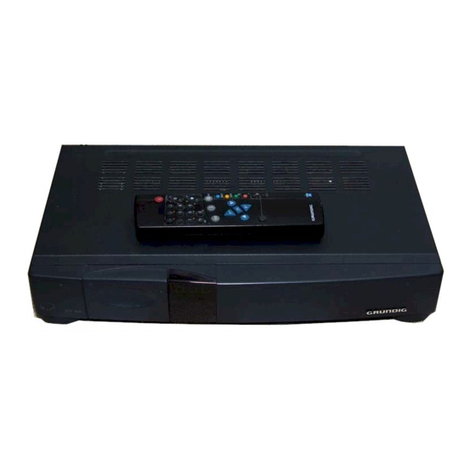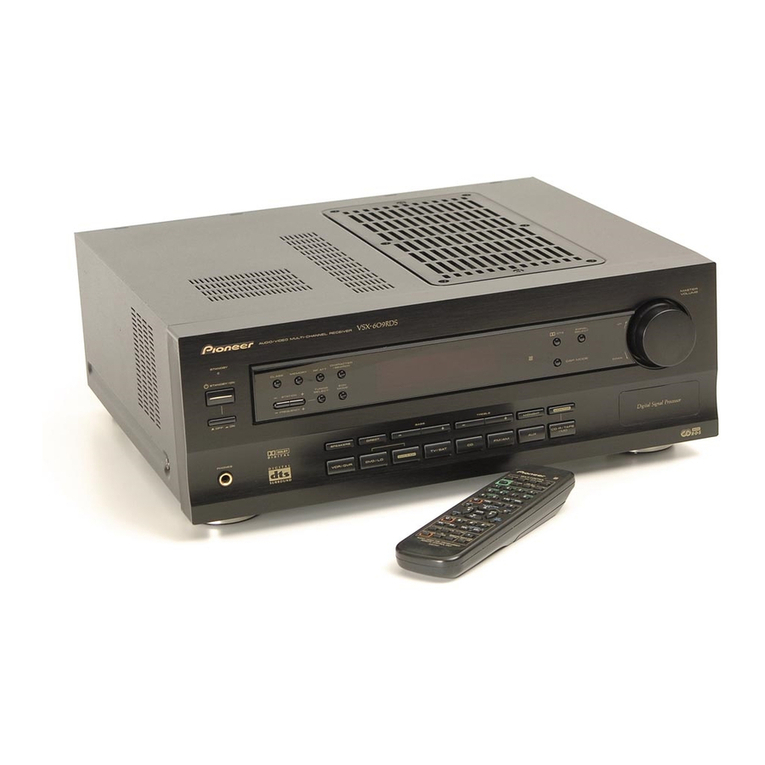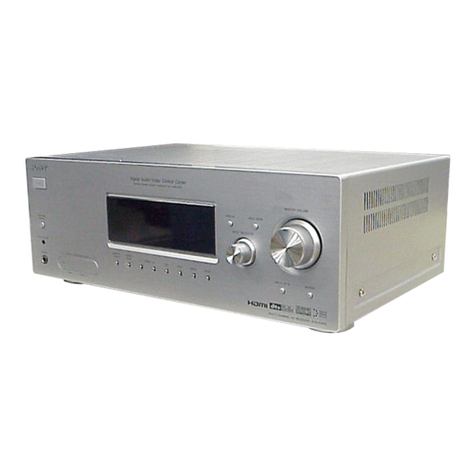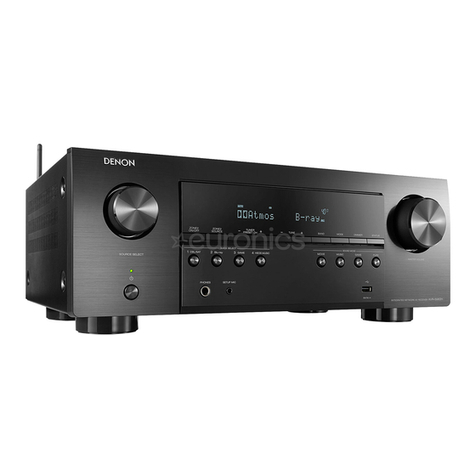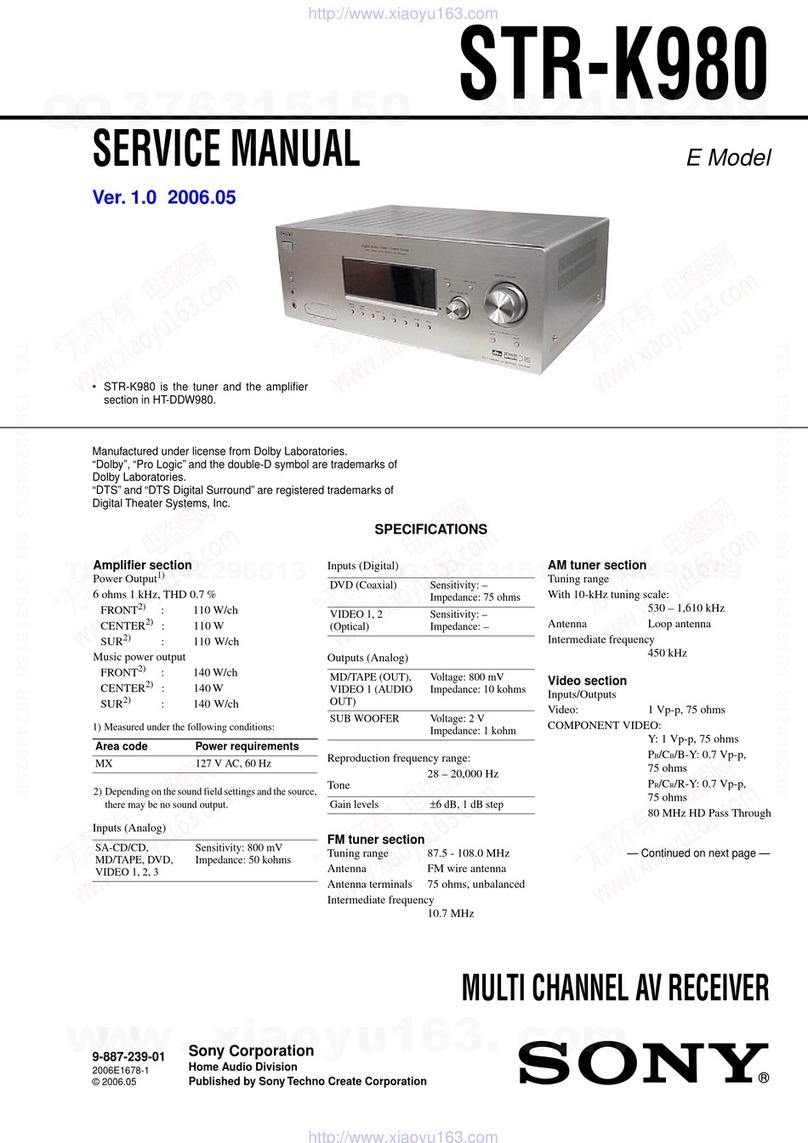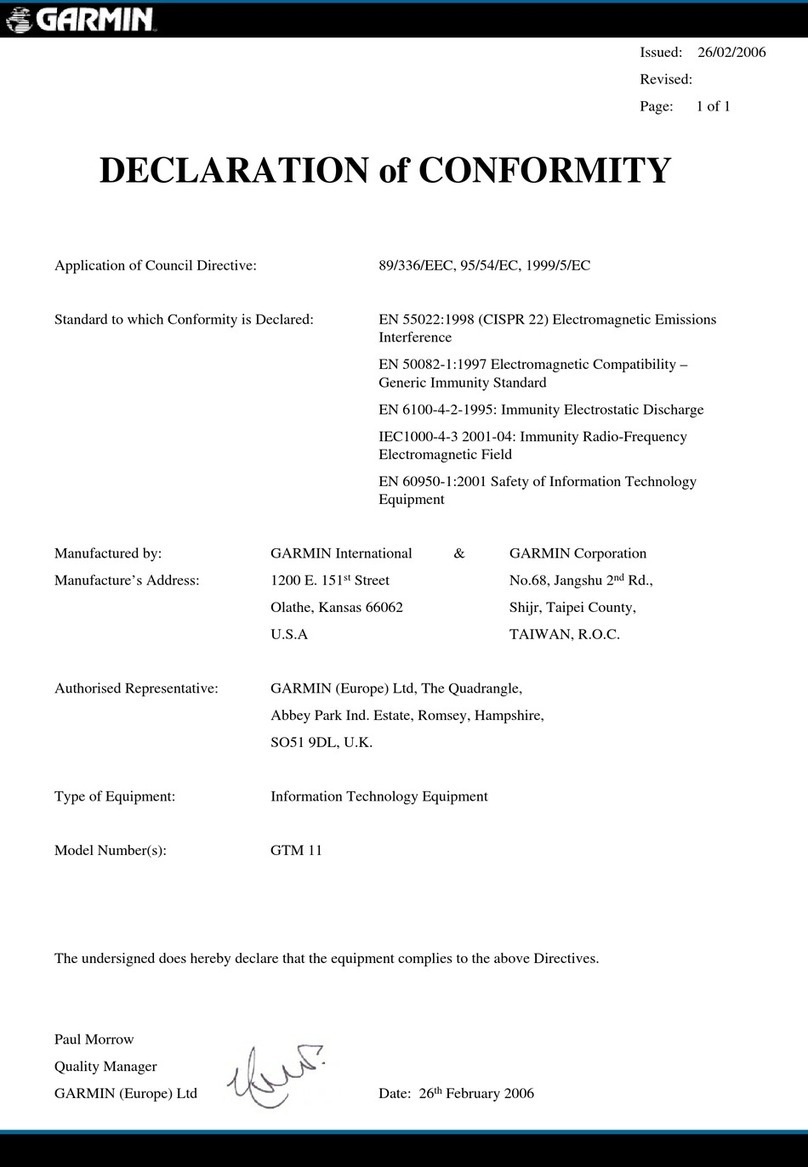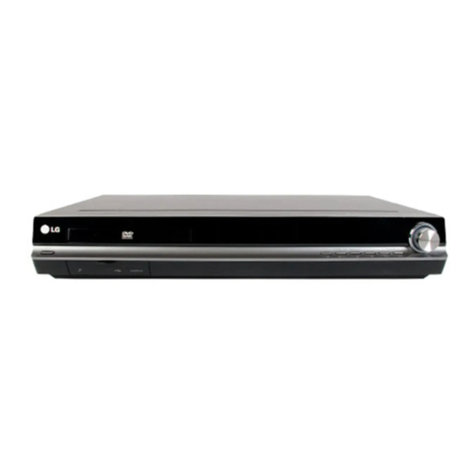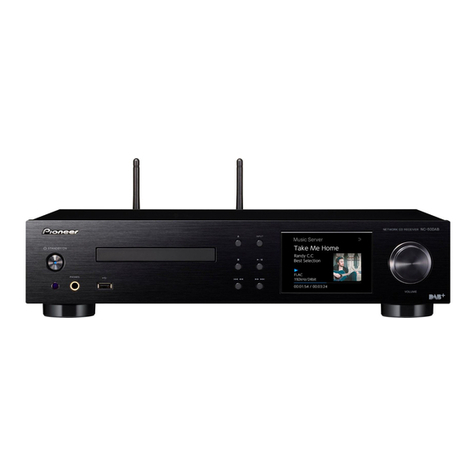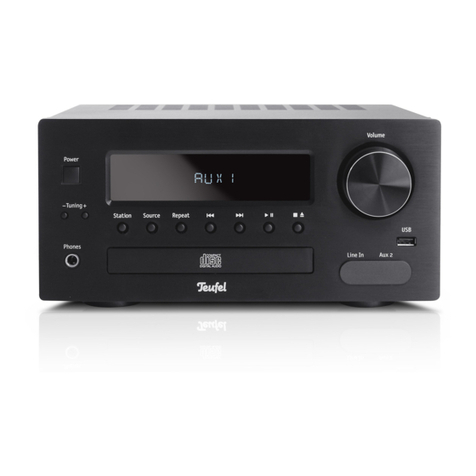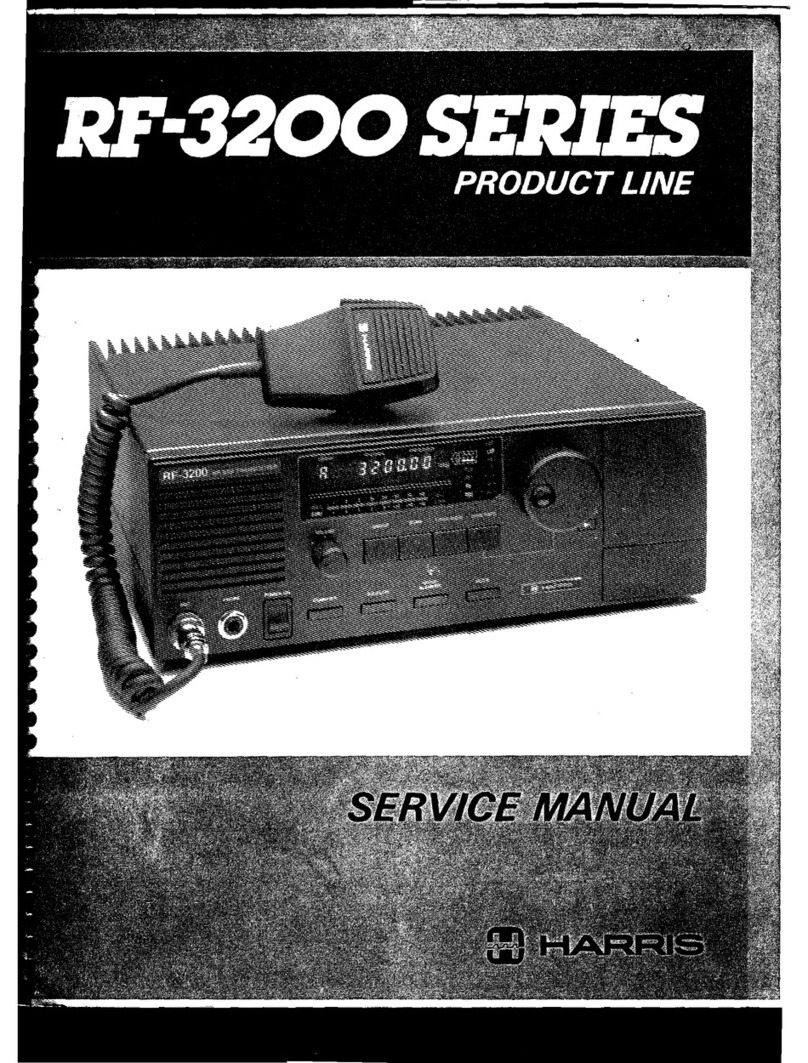Sontex Supercom 646 User manual

Manual
Radio Central
Supercom 646
Edition:
Document:
Manufacturer:
Subject to technical modification
Radio Central
Supercom 646
Revision 04-02-2011
Manual Supercom 646 GPRS rev. 04
Sontex SA
2605 Sonceboz, Switzerland
Phone: +41 32 488 30 00
Fax: +41 32 488 30 01
Email: sontex@sontex.ch
Internet: www.sontex.ch
Supercom 646
Manual Supercom 646 GPRS rev. 04
-02-2011

Manual Supercom 646 GPRS rev. 04-02-2011 2
Revision
Edition
Date
Author
Description
020310 March 2, 2010 SV 1
st
version
180310 March 18, 2010 SV Correction Chapter Memory distribution of the central;
point 3). Add pictures
010410 April 01, 2010 SV Add pictures – interior view
301110 30.11.10
SV Ajouter explications batterie/abonnement/Trame
MBUS/chapitre Répéteur….
13-12-10 13.12.10 SV Traduction selon modif file FR
17-12-10 17.12.10 SV Adaptation according the FR version
27-01.11 27.01.11 SV Adaptation according the FR version
04-02-11 04.02.11 SV Correction time sleeping mode
Rev. 0 GPRS version

Manual Supercom 646 GPRS rev. 04-02-2011 3
Table of Contents
1.
General remarks....................................................................................5
1.1
Introduction .................................................................................................................5
1.2
Area of use of the radio central...................................................................................5
2.
Shipment contents................................................................................6
3.
Radio central installation .....................................................................6
3.1
Attaching the antenna.................................................................................................6
3.2
Attachment of the central............................................................................................6
3.2.1 Wall attachment .....................................................................................................................6
3.3
Power..........................................................................................................................6
3.3.1 Activating the power main ......................................................................................................6
3.3.2 Activation of the batteries mounted on the motherboard.........................................................6
3.3.3 Battery power module for 52 data collections a year ..............................................................7
3.3.4 Mains power supply module...................................................................................................7
3.3.5 GPRS module........................................................................................................................7
3.3.6 Mobile phone subscription required with the GPRS module...................................................8
3.3.7 M-Bus module........................................................................................................................9
3.4
Closing and sealing the case ......................................................................................9
3.5
Configure the radio central..........................................................................................9
3.5.1 Starting the radio central with the software Tools646 ...........................................................10
4.
Radio device data collection and periods......................................... 11
4.1
Radio schedule .........................................................................................................11
4.2
Saving data...............................................................................................................12
5.
Description of Light Emitting Diodes (LED)......................................13
5.1
LED display...............................................................................................................13
5.2
GPRS Module, description of LED............................................................................14
5.3
Power supply problems.............................................................................................14
5.3.1 Power network stopped or low battery power:......................................................................14
5.3.2 Power Battery or Backup Battery Discharged:......................................................................14
6.
General instructions...........................................................................15
6.1.1 Power network stopped or power battery discharged...........................................................15
6.1.2 Care of the batteries.............................................................................................................15
6.1.3 Changing batteries...............................................................................................................15
6.1.3.1 Procedure to change the batteries........................................................................................16
6.1.3.2 Reset of elapsed time meter.................................................................................................16
6.1.4 Connection of the mains power module................................................................................17
6.1.5 Safety instructions................................................................................................................17
6.2
Safety seal ................................................................................................................17
6.3
Technical Data..........................................................................................................18
6.4
Dimensions ...............................................................................................................19
7.
M-Bus communication protocol ........................................................ 20
7.1
Introduction ...............................................................................................................20
7.2
Memory distribution of the central.............................................................................20
7.3
Reading concept.......................................................................................................20

Manual Supercom 646 GPRS rev. 04-02-2011 4
7.3.1 Instructions for a reading of the configuration and the device list of the radio
central 21
7.3.2 Reading of read and saved radio device data.......................................................................29
7.4
Writing concept in the radio central...........................................................................30
7.4.1 Configuration modification of the radio central......................................................................30
7.4.1 Password of the radio central...............................................................................................31
7.4.2 Adding a device to the device list in the central....................................................................31
7.4.3 Device list modification.........................................................................................................31
8.
Uses.....................................................................................................32
8.1
Firmware updating ....................................................................................................32
9.
Annexe A.............................................................................................33
9.1
Reading process of the radio central configuration...................................................33
9.2
Reading process of the radio central saved device list .............................................34
9.3
Reading process of the radio central’s read and saved device data.........................35
10.
Annexe B.............................................................................................36
10.1
Writing or configuration process of the radio central.................................................36
11.
Annexe C.............................................................................................37
11.1
Radio repeater Supercom 656 R...............................................................................37
12.
Annexe D.............................................................................................38
12.1
Parameterization.......................................................................................................38
12.1.1 PIN code..............................................................................................................................38
12.1.2 Call back number.................................................................................................................38
12.1.3 Password for SMS controls..................................................................................................38
12.1.4 GPRS access.......................................................................................................................38
12.1.5 FTP access..........................................................................................................................39
12.1.6 HTTP Time Server access ...................................................................................................39
12.2 SMS.....................................................................................................................................40
12.2.1 General syntax.....................................................................................................................40
12.2.1.1 Content of a command SMS sent to the central unit.............................................................40
12.2.2 Commands...........................................................................................................................40
13.
Annexe E .............................................................................................44
13.1
BIN file Format..........................................................................................................44

Manual Supercom 646 GPRS rev. 04-02-2011 5
1. General remarks
1.1 Introduction
This manual describes the function and use of the radio central Supercom 646. It addresses the
questions of both users and engineers.
1.2 Area of use of the radio central
The Supercom 646 radio central gathers radio data supplied by radio meters. The Supercom radio
central can be read via a USB or RS232 interface, optically, by an M-Bus or GSM/GPRS and al-
lows radio reception of the following Sontex products:
Radio Heating Cost Distributor 502s / 552 / 556
Radio Water Distributor 590
Supercal 539 Compact Energy Meter with radio option
Supercal 531 Integrator with radio option
Radio Module 540 (2 entries max.) / Supercom 541
Supercom 580 / 581 Radio Module
The communication peripherals of the Supercom 646 radio central are conceived for connection to
a computer through a USB, RS232, Optic, M-Bus or GSM/GPRS interface. The Supercom 646
allows the radio reception of different meters. The radio modem works at a frequency of 433.82
MHz and supports MFD and Radian 0 protocols.
MFD Radio Network
PC
646
Repeater
(656)
580
581
590
556
539
539+
531
552
502
540
U B,
R 232,
Optical,
G M/GPR
433MHz
M-Bus
central
M-Bus

Manual Supercom 646 GPRS rev. 04-02-2011 6
2. Shipment contents
The Supercom 646 Radio Central shipment contains:
Supercom 646 Radio Central with the power module.
1 plastic support for a DIN track
4 screws with washers and 4 pads to fix the central to a wall.
2 lead seals to lock the removable cover.
1 bridge to activate the power batteries.
1 antenna.
Manuel
CD with Supercom with, among other:
Tools646 Software
Tools646 User guide (PDF)
3. Radio central installation
3.1 Attaching the antenna
Take the antenna in the plastic bag and screw it on the SMA connector located on the side of the
base. Make sure that the screw of the antenna connector is tight to ensure a connection without
signal loss.
3.2 Attachment of the central
3.2.1 Wall attachment
The Supercom 646 Radio Central can be fixed horizontally or against a wall on the four supports
using the screws and pads provided. To remove the upper cover of the base, remove the cover
and remove the screw that attaches the two parts. Remove the upper case cover and attach the
lower part containing the electronic card using the four screws. The central can also be fixed to a
DIN track using the plastic support situated on the back of the lower part of the case.
3.3 Power
3.3.1 Activating the power main
The module power cable or battery must be connected to the connector on the motherboard.
3.3.2 Activation of the batteries mounted on the motherboard
During the installation of the central, the batteries must be connected. In
order to do this, one must place the jumper on the two pins of the first line of
the connector of the motherboard. When the bridge is closed, the central is
powered by the battery/batteries and the green and orange LEDs flash
three times simultaneously. From this moment on, the central can be con-
figured via the selected interface by the configuration software linked to the
central.
If using a radio central with GPRS module initially insert the SIM card
before activating the battery/batteries with the jumper.

Manual Supercom 646 GPRS rev. 04-02-2011 7
3.3.3 Battery power module for 52 data collections a year
The battery power module is set for maximum 52 data collections a year for a period of 10 years
for the radio reception of 500 radio devices or 24 data collections a year for 1000 radio devices.
3.3.4 Mains power supply module
Pass the power cable through the cable hole of the lower part of the case and connect it to the
power module terminal. The power module is connected by a cable to the motherboard of the cen-
tral. Power is necessary with the use of a GSM/GPRS module. A backup battery is on the mother-
board in case of a power failure.
3.3.5 GPRS module
The GSM function allows to connect to the radio central Supercom 646 by using the GSM net-
work. This remote connection can be established through a computer connected to a modem.
The GPRS function allows sending data of radio devices read by the Supercom 646 on a FTP
server via the GPRS network. It is also possible to send and receive SMS messages by the GSM
network to see the status of the radio central. The functionalities through the GSM network are also
possible.
If the central is equipped with a GSM/GPRS module, insert the SIM card in the SIM card holder
and press the « Reset » - button located on the motherboard. A power source must be connected
to the GSM/GPRS module that the activation happens correctly.
Together with the GPRS module it’s important to choose the right subscription. Mobile
communications services may greatly vary between countries and providers.

Manual Supercom 646 GPRS rev. 04-02-2011 8
Installation procedure of GPRS module
This procedure describes the 1
st
commissioning of the radio central.
Before any manipulation, ensure that the mains power supply is not connected and also the jumper
is not connected to the jumper position 2 on the motherboard. If the bridge is open, the central is
not powered by the battery/batteries (see chapter 3.2.2).
Proceed as follows:
Insert the SIM card in the SIM card holder on the GPRS module.
Set the jumper to position 2 on the motherboard. If the bridge is closed, the central is powered
by the battery/batteries (see chapter 3.2.2)
Connect the radio central to the computer with the UBS or RS232 cable. Read the configura-
tion of the radio central with the software Tools646.
In the tab « General Settings » of the Tools646 set the date and time of the radio central.
In the tab « Communication » go to the panel «Module 2 », and introduce the PIN code of the
SIM card of the GPRS module. Other information like GSM / GPRS / FTP / SMS, reading peri-
ods and the list of devices can be introduced at the same time or later.
Program the radio central with these information.
Connect the power cable to the mains power supply module.
Close the radio central Supercom 646 with the cover
Connect the power cable to the power plug in the wall.
Once the radio central is set up and powered, the GSM / GPRS module tries to connect to the
GSM network. This may take up to 1 minute. Once connected to the GSM network the orange LED
of the module will flash every 3 seconds.
Remark:
Make sure that the correct PIN code of the SIM card is available to be introduced with the
software Tools646.
In case an incorrect PIN code was introduced, an error will be recorded in the radio central for the
GPRS module and visible with the software Tools646 (field "Error" of the GPRS Module).
After three retries with a incorrect PIN code the GPRS will be blocked and can only be released
with the PUK code.
For this, please insert the SIM into a mobile phone and then enter the PUK code ( this operation is
not realizable by the Tools646).
3.3.6 Mobile phone subscription required with the GPRS module
To cover all functionalities of the GPRS module, the mobile phone subscription of the SIM card
must cover the following functions/features:
M2M Data Exchange:
Machine-to-machine (or M2M) is increasingly being used in a variety of different sectors optimizing
and accelerating processes of interconnection of several GSM/GPRS modules.
Internet Access
The GPRS module needs an internet access. The GPRS module plays the role of the HTTP Client
and FTP Client.
A basic GPRS subscription with Public Internet Access is enough.
Subscriptions with CAA (Corporate Application Access) and CNA (Corporate Network Access) can
also be used without providing additional functionally to the GPRS module.
CSD communication
That the radio central can be called, the GPRS subscription of the SIM card must be able to re-
ceive incoming calls via its own number (CSD MT or CSD incoming).

Manual Supercom 646 GPRS rev. 04-02-2011 9
In case the subscription doesn’t provide CSD MT it is possible to use the Call-Back function of the
radio central Supercom 646. For this an output channel or CDS MO, and an outgoing voice chan-
nel is necessary with the subscription.
SMS sending
The mobile phone subscription must also allow sending and receiving SMS messages in GSM text
format with 160 characters per SMS.
The module cannot concatenate several SMS messages for the send or receive functions.
See annexe D
The user guide of the software Tools646 contains different commands to install / configure /
test a radio central Supercom 646 according to the communication interface used.
3.3.7 M-Bus module
Connect the M-Bus transmission cable to the terminal on the module and fix it to the module using
a strap.
3.4 Closing and sealing the case
At the end of the Supercom 646 Radio Central installation, the case of the central must be closed
by starting with the power side in order to be careful with the 2 insertion connectors. The male
connectors of the cover must be in line with the female connectors of the lower part of the case. To
do this, one must slide the covers together. Tighten the fixation screw of the two covers and then
insert the lead seal in the opening on the upper cover of the case. Once the seal is fixed, the Su-
percom 646 Radio Central can’t be opened without breaking the seal. The access to the USB or
RS-232 interfaces is not possible after the sealing.
3.5 Configure the radio central
The parameter configuration of the Supercom 646 Radio Central can be done with the software
Tools646 supplied by Sontex. The software documentation is delivered with the software
(Tools646 User guide). The configuration can be done with the optical interface or with the com-
munication mode installed in the central (USB, RS-232, M-Bus or GPRS). Configuration access is
protected by a password. On top of the running of radio devices, the following parameters can be
defined and modified by the software Tools646:
Number identification of the radio central.
Time and date (must be initialized before doing a radio device data collection)
Time and date of the radio device data collection.
Transmission speed depending on the type of interface, M-Bus, computer or modem.
PIN code of the GPRS modem and call-back number of the call-back function if used.
Password modification for writing protection.
Changing the password.
Radio central firmware update.

Manual Supercom 646 GPRS rev. 04-02-2011 10
3.5.1 Starting the radio central with the software Tools646
Adjust the time and the date of the radio central to winter time.
Create or save a radio device list to read.
Once the radio central is programmed, the radio communication between the central and the
different radio devices must be tested.
Program an immediate reading according to the list contained in the central.
Verify that all the radio devices have been read correctly. If this is the case, the radio central is
properly configured and placed to collect data.
Program the data collection dates from the radio devices.
For detailed information we refer to the Tools646 User Guide EN.

Manual Supercom 646 GPRS rev. 04-02-2011 11
4. Radio device data collection and pe-
riods
Only Sontex Radio devices can be read by the Supercom 646 Radio Central.
Radio devices can be read 7 days a week depending on the radio schedule of each product type
(except the devices 502/502S/552 and 540 whose date and time of reading varies according to the
type of the device). To set the read out schedule, please refer to the tab “Collection Date” of the
Tools646 software.
With an automatic data collection configuration, the radio central Supercom 646 will start the read-
ing of the devices contained in the list from 18:15 of the selected date.
4.1 Radio schedule
During a radio data collection, the time of the device questioned by the central will be automatically
synchronized with the time of the radio central Supercom 646. It is therefore important to carefully
verify that the time of the radio central has been initialized with winter time.
Final digit
serial number 0 1 2 3 4 5 6 7 8 9 10 11 12 13 14 15 16 17 18 19 20 21 22 23
502 552
502s 552 0
502s 552 1
502s 552 2
502s 552 3
502s 552 4
502s 552 5
502s 552 6
502s 552 7
502s 552 8
502s 552 9
540
556 590 0
556 590 1
556 590 2
556 590 3
556 590 4
556 590 5
556 590 6
556 590 7
556 590 8
556 590 9
539 > SW 1.6
539 ≥SW 2.3
531
580 581
541
Ready, 7 days a week, all year round
Ready, Mo-Fr, 16.6-15.7 by default, but can be changed.
Every 3rd second, Mo-Fr, all year round
Ready, Mo-Fr, all year round
UTC + 1 (Winter Time) by default, but can be changed
Product

Manual Supercom 646 GPRS rev. 04-02-2011 12
4.2 Saving data
Data is saved in the non-volatile flash memory of the radio central. Supercom 646. This memory
contains the configuration parameters of the radio central Supercom 646, the list of devices to
read, the data of the last readout as well as the firmware version of the radio central Supercom
646.. The radio central Supercom 646 is equipped with a memory that can stock up to 1000 radio
devices.
The following Sontex products can be read:
Radio Heat Cost Allocator 502s / 552 / 556
Radio Water Allocator 590
Supercal 539 Compact Heat Meter with radio option
Supercal 531 Integrator with radio option
Radio Pulse Module 540 (max 2 entries.) / Supercom 541
Supercom 580 / 581 Radio Module

Manual Supercom 646 GPRS rev. 04-02-2011 13
5. Description of Light Emitting Diodes
(LED)
The Supercom 646 Radio Central is equipped with 2 LEDs:
A green LED to indicate power and communication
An orange LED to indicate device data errors.
This error can mean that the central clock is invalid or non-initialized, that the data or the memory
is damaged.
5.1 LED display
The state of the two LEDs allows the definition of the Supercom 646 Radio Central’s current mode
and status as indicated below:
Status
Main power supply 230V
Battery power supply
Initialization Green LED and orange LED: 3 simultaneous blinks for 0,5 second,
each second.
Radio test mode Green LED: blinks for 0,5 second, each second.
Orange LED: blinks alternately.
Sleeping Mode
Normal Green LED: ON
Orange LED: OFF
Green LED: blinks for 40 ms every 4
seconds.
Orange LED: OFF
Time or memory
is not available Green LED : OFF
Orange LED: ON
Green LED: OFF
Orange LED: blinks for 40 ms every
4 seconds.
During communica-
tion.
(Optical 3x)
(Fixed Interface 2x,
(Mobile 1x)
Normal Green LED: blinks for 0,5 second each second.
Orange LED: OFF
Time or memory
is not available Green LED: OFF
Orange LED: blinks for 0,5 second each second.
GPRS and during
data collection Normal Green LED: OFF
Orange LED: OFF
After each radio de-
vice data collection
Correct Reading Green LED: blinks for 0,5 second once for each device read.
Orange LED: OFF
Incorrect
Reading
Green LED: OFF
Orange LED: blinks for 0,5 second once for each device not read.
OFF = LED off; ON= LED on
Green LED Orange LED

Manual Supercom 646 GPRS rev. 04-02-2011 14
5.2 GPRS Module, description of LED
The GPRS module is equipped with an Orange LED that can be seen if the cover of the radio cen-
tral is removed.
The flashing sequence of this LED is defined as follows:.
GPRS Network Connect Orange LED: blinks for 40 ms every 3 seconds
Not connect Orange LED: blinks for 40 ms every (1 s) second.
5.3 Power supply problems
In case of power supply problems (network or battery), the two LEDs indicate the problem.
5.3.1 Power network stopped or low battery power:
Status
230V Network Power
Stopped Low Battery Power
Sleeping Mode Normal Green LED: blinks for 40 ms every 8 seconds.
Orange LED: OFF
Invalid Clock or
Memory Green LED: OFF
Orange LED: blinks for 40 ms every 8 seconds.
5.3.2 Power Battery or Backup Battery Discharged:
Status
Backup Battery Di
s-
charged Power Battery Discharged
Sleeping Mode Normal Green LED: blinks 2x for 40 ms every 8 seconds.
Orange LED: OFF
Invalid Clock or
Memory Green LED: OFF
Orange LED: blinks 2x for 40 ms every 8 seconds.

Manual Supercom 646 GPRS rev. 04-02-2011 15
6. General instructions
The Supercom 646 Radio Central must only be installed by authorized persons.
The technical specifications of the Supercom 646 Radio Central must be respected.
The lower part of the radio central case is made to be laid flat or fixed to a wall. The attach-
ment to a wall can be done with four screws or a DIN track.
The Supercom 646 Radio Central can be installed horizontally or vertically in an area free of
metallic obstacles.
Radio data transmission quality depends on the wave propagation of the radio central installa-
tion site, the radio connections of the different radio devices as well as atmospheric and geo-
graphic conditions (in particular in enclosed areas or so-called dead zones)
Radio communication cannot be guaranteed at any time and anywhere. The user must check
the radio propagation conditions at the planned installation spot of the radio central Supercom
646.
Keep heat emissions or electrical fields far from the radio central Supercom 646
The radio central Supercom 646 must not be exposed to humidity.
The connection of the power cable to the terminal must be as short as possible.
Avoid electrostatic discharges during installation or manipulation. Before touching the radio
central or a communication interface, one is advised to touch a ground such as a hot water
pipe to discharge oneself of any static electricity.
With the option of the power network module, be careful with high tension power sources.
Avoid touching accessible electronic circuits or contacts.
The RS232 interface cable must not be longer than 5 meters.
6.1.1 Power network stopped or power battery discharged
In case of an electrical breakdown or a dead battery, the clock of the central is always active while
all radio communications are deactivated. It is no longer possible to collect radio device data con-
tained in the radio central list but it is always possible to question the radio central Supercom 646
and read the data of the devices contained in the radio central optically or by the other wireless
methods available.
6.1.2 Care of the batteries
The batteries must not be opened, be in contact with water or short circuited. Empty batteries must
be eliminated in appropriate collection points. Battery life depends strongly on temperature. There-
fore, the Supercom 646 radio central must be installed far from sources of heat or cold. The 2 3V
format A batteries used with the battery powered module soldered to the motherboard must be
identical and correspond to the batteries delivered by the manufacturer. If another battery than the
one recommended by Sontex is used, there could be a danger of explosion.
6.1.3 Changing batteries
If changing batteries, it is imperative only to use the same type of battery.
Always double check with Sontex.

Manual Supercom 646 GPRS rev. 04-02-2011 16
6.1.3.1 Procedure to change the batteries
Mains power supply:
If the radio central is powered with mains supply unplug the power cord
from the power plug before changing the backup battery. Cut the Nylon
strap around the backup battery to release it from the mother board and
replace it with a new one of the exact same specification. With a new Ny-
lon strap fix the battery tight through the hole in the mother board and
around the battery.
Always press the reset button after a battery change, close the cover, pro-
tect the radio central with a new seal and plug the power cord back in the power plug.
Battery powered:
If the main battery is discharged cut the Nylon strap to release
the mains battery from the bottom of the radio central and dis-
connect the connection cable that connects the main battery to
the motherboard. Replace the battery with a new one of the ex-
act same specification and with a new Nylon strap fix the battery tight through the hole on the bot-
tom of the radio central and around the battery. Reconnect the connection cable.
If the backup batteries are discharged cut the Nylon strap around the backup battery to release it
from the mother board and replace it with a new one of the exact same specification. With a new
Nylon strap fix the battery tight through the hole in the mother board and around the battery.
Always press the reset button after a battery change, close the cover, and protect the radio central
with a new seal.
6.1.3.2 Reset of elapsed time meter
If the radio central is mains powered the elapsed time meter records the running hours of
backup battery.
If the radio central is battery powered the elapsed time meter records the operating hours of the
main battery.
After changing mains or backup battery it is recommended to reset elapsed time meter of the bat-
teries.
Reset the elapsed time meter with the software Tools646 in the tab « General Settings », and the
function « Reset ».
Elimination Advice
The batteries and the Supercom 646 Radio Central must be eliminated in a way that protects the
environment and must be returned to the manufacturer for elimination. In this way, we can deal
with the components following prescriptions for battery and electronic waste elimination. If you do
the elimination, inform yourself of recycling possibilities in your area.

Manual Supercom 646 GPRS rev. 04-02-2011 17
6.1.4 Connection of the mains power module
The connection must be done by an authorized person and must be conform to national and inter-
national standard and local security laws.
The mains power supply must be protected with a fuse of 2 -10 A. The power cable must be in-
stalled that no hot sources (e.g. pipes, vans) over 70°C interfere with the power cord to avoid any
damages of the housing.
Use only power cords with wires with a cross section of > 0,75 mm
2
to 1,5 mm
2
.
6.1.5 Safety instructions
The Supercom 646 Radio Central left the factory in a perfect state of functioning and safety. To
maintain this state and to guarantee optimal safety, the user must respect the instructions con-
tained in this document. When opening the upper cover or removing protective parts, remember
that elements could be live. All repairs and service work must be done by persons specialized for
this kind of equipment. If the cases and/or the power cable show signs of damage or an anomaly,
the Supercom 646 Radio Central must be disconnected and protected against any accidental re-
opening.
The maximal functioning temperature is 55°C. If the surrounding temperature goes above this
maximum, the component and battery life will be negatively affected.
To protect the radio central against dirt and damage, the packaging should only be removed during
the installation. For cleaning, a moist cloth is sufficient. Do not use solvents. The connecting and
linking cables must not be fixed to or insulated on pipes in the installation area.
6.2 Safety seal
In order to protect the Supercom 646 Radio Central against any unauthorized handling, the central
is equipped with a safety seal to guarantee that the central has not been opened. The safety seal
shall only be broken and removed by competent persons. If this is not respected, the guarantee is
void.
Safety Seal

Manual Supercom 646 GPRS rev. 04-02-2011 18
6.3 Technical Data
General
Operating temperature 5°- 55°C
Storage temperature -10°- 60°C (dry environment)
Weight 0.340 Kg (Power supply 230VAC + GSM + RS232).
Housing
Protection class according DIN 40050 IP 40 (except the bottom for the passage of cables)
Dimensions
Housing dimensions 180x154x46 mm
Interface de communication available
Optical interface is installed by default on each radio central Supercom 646.
USB
M-Bus
GSM/GPRS
Radio communication
Communication Bi-directional
Modulation FSK
Frequency 433.82 MHz
Radio protocol Radian 0
Data transmission EN 60870-5 (M-Bus)
PER 10 mW
Range on free field ca. 300 m
Range in buildings approx. 30 m*
* Values depend on the structure of buildings
Due to physical conditions, the transmission and reception ranges can vary (Influence of temperature, humidity, atmospheric pressure
Electronic Characteristics
Network Power Module Backup Battery:
3V Lithium Manganese Dioxide (Li-MnO2) format
2
/
3
A
Power Module Batteries :
3,6V Lithium Thionyl Chloride (Li-SOCI2) format D + 2 x 3V format A (soldered to the mother-
board).
GPRS subscription requirements for mobile phone:
M2M data exchange
Internet access
The GPRS module plays the role of the HTTP Client and FTP Client.
A basic GPRS subscription with Public Internet Access is enough.
Subscriptions with CAA (Corporate Application Access) and CNA (Corporate Network Access)
can also be used without providing additional functionally to the GPRS module.
CSD communication
To be called, the GPRS subscription of the SIM card must be able to receive incoming calls
via its own number (CSD MT or CSD incoming).
If the subscription provides an output channel or DSF MO, and an outgoing voice channel, it is
possible to use the redial function of the central Supercom 646.
SMS sending and receiving in GSM text format with 160 characters per SMS.

Manual Supercom 646 GPRS rev. 04-02-2011 19
6.4 Dimensions
Interior view
Supercom 646 Batterie, USB Supercom 646, main power supply 230 VAC,
USB, GPRS
View from the bottom with DIN rail holder.

Manual Supercom 646 GPRS rev. 04-02-2011 20
7. M-Bus communication protocol
7.1 Introduction
The Supercom 646 Radio Central uses the M-Bus European Norm EN1434 protocol to communi-
cate.
The M-Bus protocol supports a secondary addressing. For more information, please refer to the M-
Bus documentation on the internet at the following site: http://www.m-bus.com/
7.2 Memory distribution of the central
The memory of the radio central can be defined by three distinct parts. Each of these parts can be
addressed according to the M-Bus protocol in reading and writing or only in reading.
1. Data containing the configuration of the central (reading and writing)
2. Data containing the list of memorized devices (reading and writing)
3. Data containing the data of devices read by the central (reading)
7.3 Reading concept
The radio central is seen as 2 distinct devices:
1. The central itself.
2. The read device whose read data is saved in the memory of the central.
The Supercom 646 sends several blocks. The 2 first blocks are dedicated for the central. The fol-
lowing blocks depend on the amount of radio devices contained in the list of the radio central:
1. Frames n°1 and n°2 for the central
2. Frames n°3…n°xx contain the list of radio device s read by the central. There are four devices
per frame.
Table of contents
